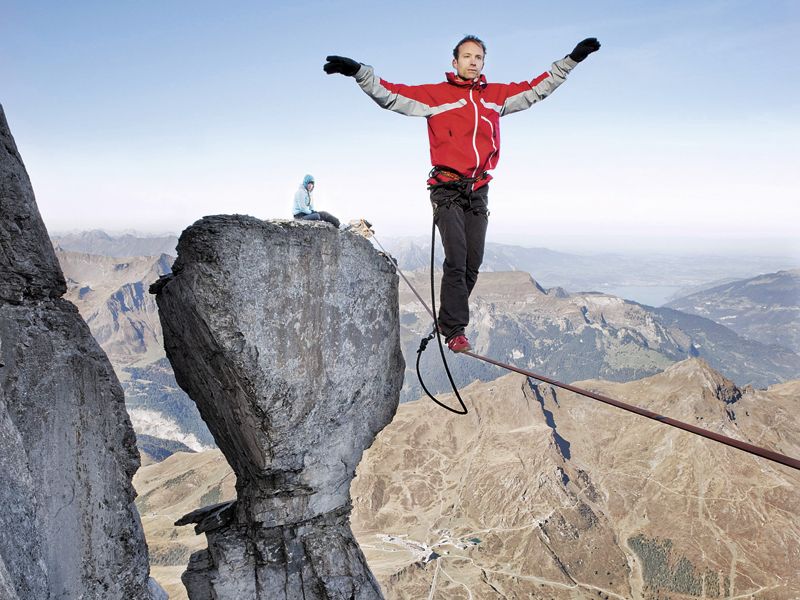Just like slacklining, the mountain sport of highlining has its origins in climbing.
Highlining is walking on a plastic band at height, whereby additional safety precautions are necessary. For example, all components of a highline system are redundantly secured and the highliner walks with a belay and harness.
Climbers brought highlining from Yosemite National Park in the USA to Europe and Switzerland. The first highline was climbed in the USA in 1983, the oldest documented highline in Switzerland probably dates from 7 June 2004, when Stephan Siegrist climbed an approx. 8m long highline on Hintisberg, BE.
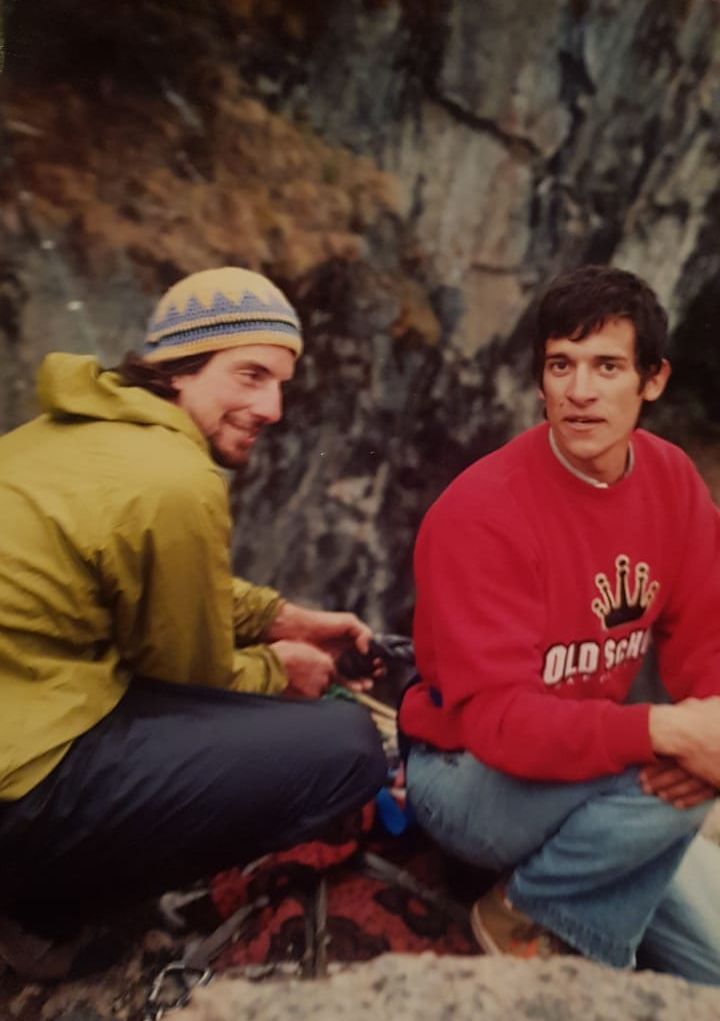
Then, in 2007, Mathias Thalmann from Lucerne succeeded in creating a Highline over 20m long on the Schrattenfluh to celebrate and Stephan Siegrist crossed a line above Interlaken – These were the first reports on highlining in Switzerland (Attention: the construction techniques from that time no longer correspond to today’s standards!).
Shortly afterwards, in the years 2007-2009, independent highline scenes developed in Central Switzerland, Bern and French-speaking Switzerland, which all got to know each other around 2009-2010. Among the first active highliners in Switzerland who regularly balanced at height were Thomas Buckingham (Schwyz), Bernhard Witz, Kaspar Langenegger, Yves Hueber, Kaspar Burkhalter and Reno Moser (all Bern), as well as Jérémy Folly, James Clulow, Sebastien Collet and Alain Custovic (all Romandie).
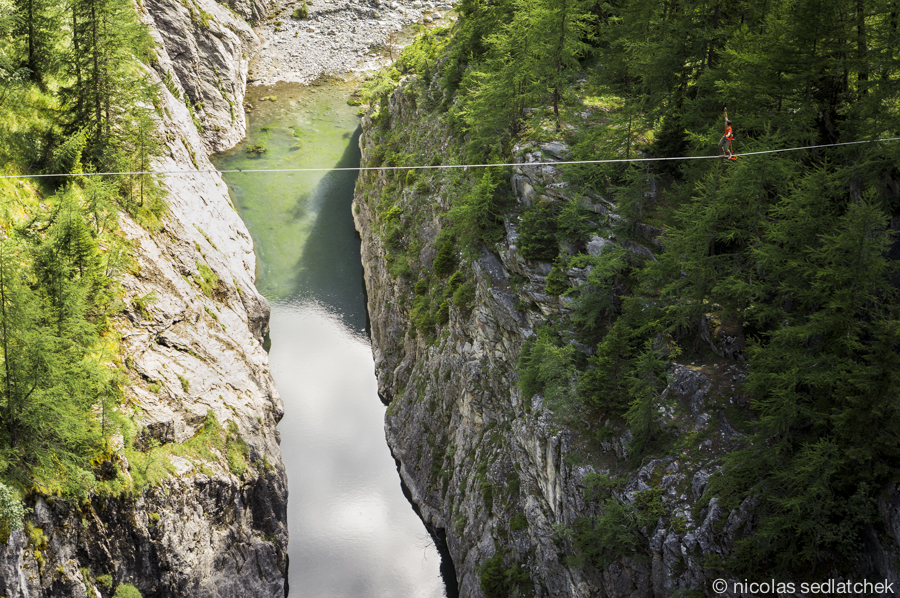
In 2012, a large group of Swiss highliners met for the first time in Ponte Brolla, initiated by Samuel Volery and Salvatore Daniele from Zurich. In the same year, the Bernese built Switzerland’s first space highline (a connection between several highlines). Samuel Volery and Alexis Gonin were already practising dynamic tricks like somersaults on the highline.
Switzerland was already a popular destination for the international highline community in the early years. One of the first major projects was the ascent of the Mönchsbüffel Highline in the Lauterbrunnen Valley in 2010 with slackliners from the USA, Canada, Germany and Austria.
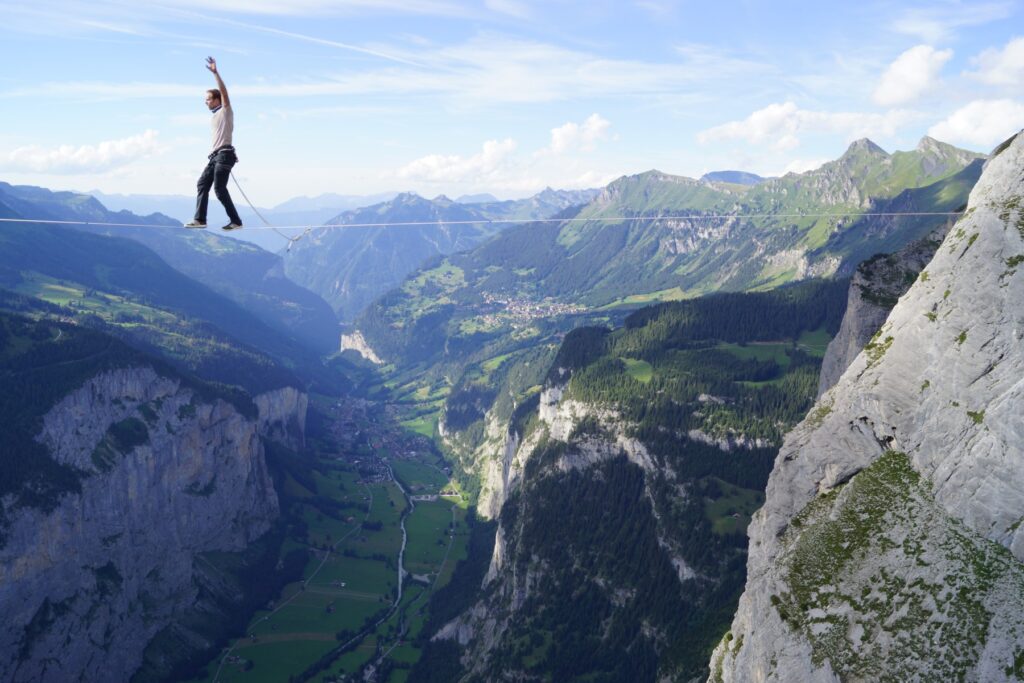
Globally, 2012 marks the first year with a marked increase in highline activity. This motivated Bernhard Witz and Thomas Buckingham to Highline recommendations which are now in their fourth version, have been translated into dozens of languages and are used all over the world.
2014 marks an important year in highlining: the setup was fundamentally questioned. From now on, the highlines were set up with low tension and loose backups. This made it possible to climb 100+m highlines, which had previously been extremely difficult. Two boys from the French-speaking part of Switzerland (Raphael Bacot and Remy Boser) attracted particular attention; they ran various world records, some of them blind.
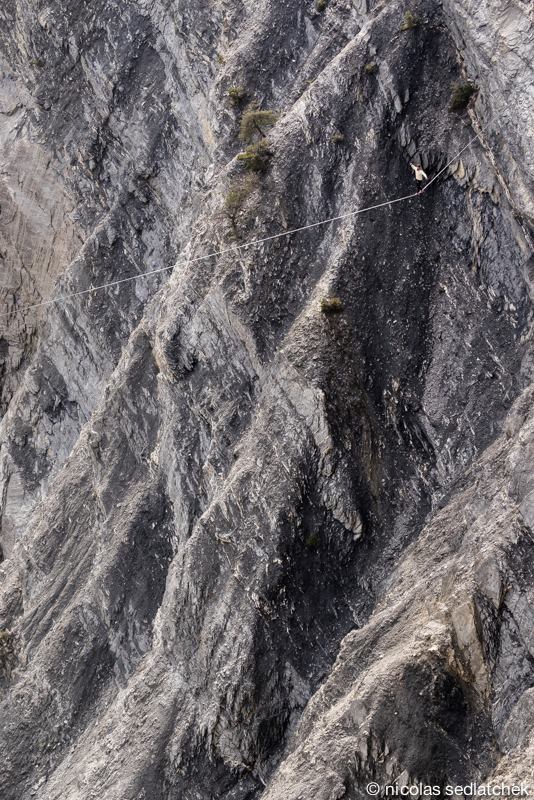
In 2015, Samuel Volery set up the 540-metre Churfirsten Highline for the first time, which was the starting signal for the collaboration with the FOCA. Such exposed highlines not only required notification, they also had to be specially signalled and paid for. This was followed by various world records in highlining by Samuel Volery in various countries, although his focus increasingly shifted abroad due to the strict FOCA requirements and the associated costs.
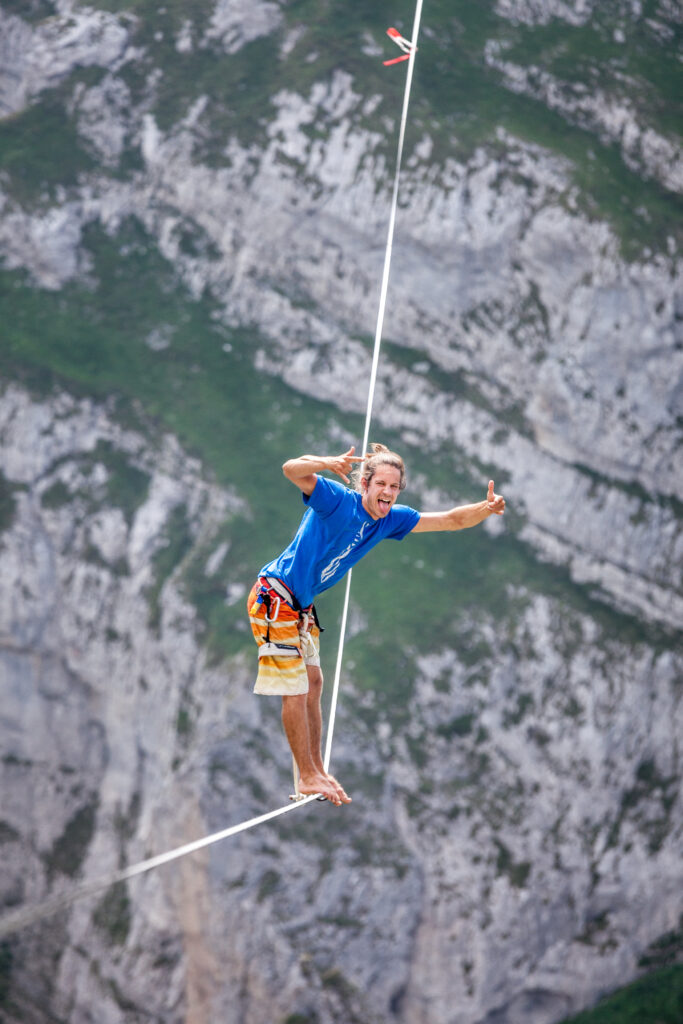
In 2019, the longest highline in Switzerland at the time (800 m) was set up and used in the canton of Graubünden above Flims. This was followed by highlines of 900 m (Canton Vd) and 1400 m (Canton Gr) in Switzerland (see records).
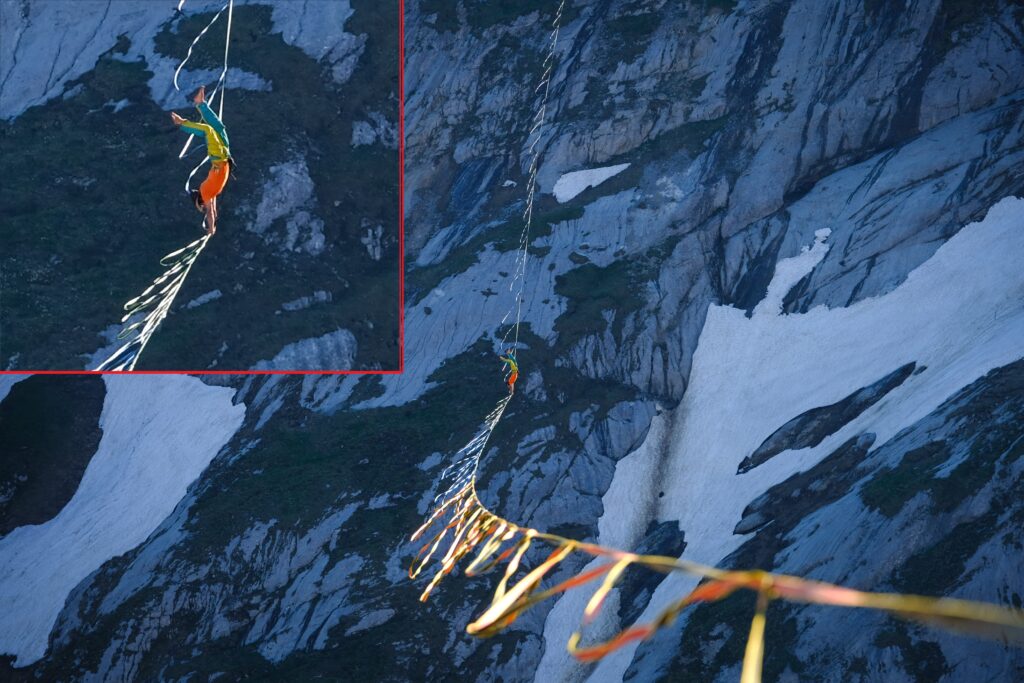
Switzerland now has around 400 highliners, around 100 of whom are very active and train several times a week.

